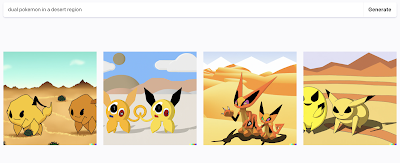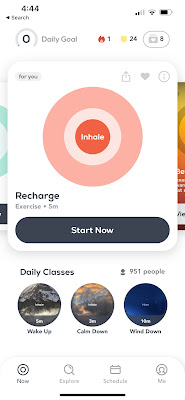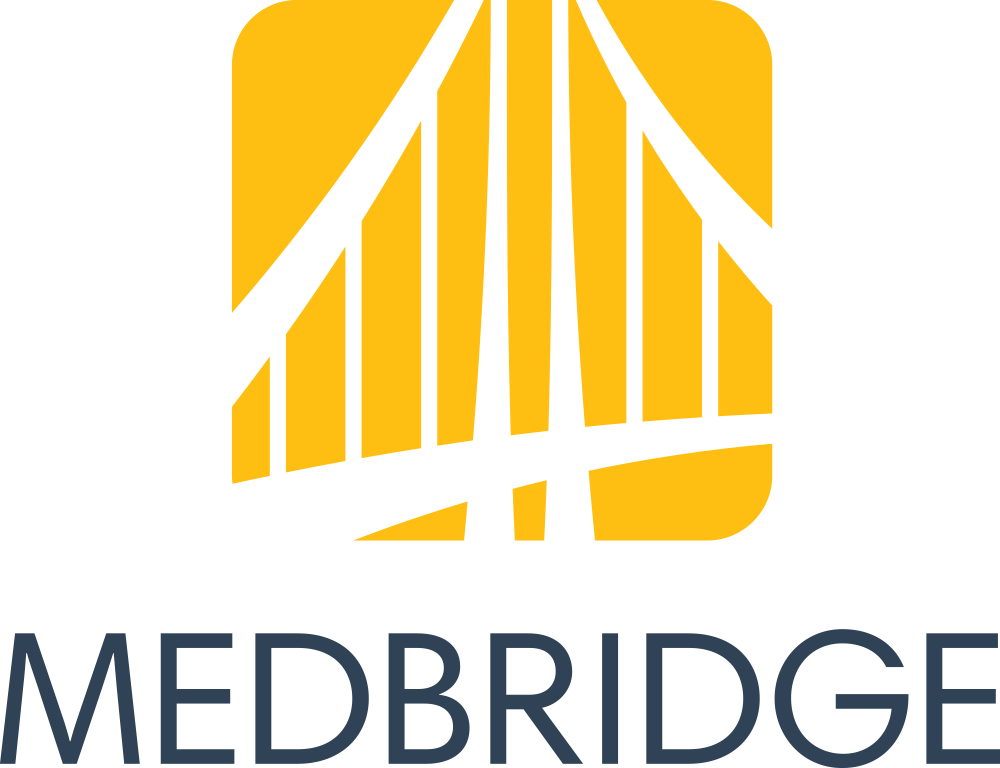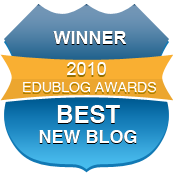During this time of year, we often do the obligatory lessons about gratitude that go well with the thanksgiving holiday. From a language perspective, practicing gratitude involves reflecting, listing and describing life events, so it is a therapeutically relevant context for sure. However, I always emphasize that there is science behind it for self-regulation, and we should try to practice it all year round! Here's a good video to detail those points.
Thursday, November 16, 2023
GratiTools (and say hi if you see me at ASHA2023 in Boston)
Friday, November 3, 2023
Have you done the Connections?
...is something my husband or I says to the other at some point every day since the spring. At that time, the New York Times added a daily puzzle that I thought was uniquely designed for SLPs and our love of categories as a foundation of semantics.
Connections is free daily via the web on whatever device, and also now is in the NYT Games app (I do subscribe as I have gotten in the habit of doing at least Sunday to Wednesday's Crossword). They explain it best:
This can be a great activity for older clients or students as you can encourage forethought- eg let's think of at least two sets of 4 items before submitting any. You can also provide a growing schema that builds metalinguistics
-Straightforward semantic category
-Figurative language or idioms
-Words that are part of a phrase e.g another word goes before or after them all
-Group that works best if you say it aloud (hint for above)
It can be a good idea to do it yourself on one device and then show it to the client on another, where it is reset, so you know how to cue. There are a variety of daily posts that provide hints, such as Mashable's.
And most importantly...you can also make your own! Think of targeting reviewed vocabulary or concepts! Check out this one I made last Friday when a certain album came out, and click Create to make your own.
Friday, September 29, 2023
Using ChatGPT for Lesson Planning Ideas
I have posted here recently on the therapeutic uses of Generative AI for language activities, and have recently been impressed by the results of using it to obtain modifiable content useful in sessions. ChatGPT is great at coming up with elaborated lists. I am working with a student on self-advocacy in the community, an an example prompt to ChatGPT is as follows:
Thursday, August 24, 2023
Finding Categories Everywhere
This summer I became addicted to the New York Times' new Connections puzzle. I enjoyed each morning tackling this often-tricky categorization activity and comparing results (or sometimes providing or receiving hints) with my husband. I've always thought of categorization as one of the most important skills--it's how we organize information, and much expository text takes on a list structure--and our literature backs this up. Approaches like the EET also use Green-Group to target describing by category, among other attributes. We can be explicit with our students (see Ukrainetz' helpful RISE acronym) and teach that categories are important ways to organize and describe words and information.
ABCYa provides a wealth of categories through its activities- you just have to look for them.
Take Dress for the Weather- here you've got an engaging activity which contains both weather conditions and clothing items. Take screenshots of relevant items and paste into Jamboard and you've got a followup sort for repetition of the concept, category and skill.
Thursday, August 17, 2023
Music LM
Proceeding from some ideas about the role of music in speech-language therapy (and social coaching), back in the spring I did some activities with MusicLM. This tool is available from Google's AI Test Kitchen, which is free, though you currently have to sign in with a personal Google account and may have to wait a short while to be approved. With Music LM you "Describe a musical idea and hear it come to life." More specifically, type an activity, setting, situation, style, mood, or specific musical instruments, and it will create several examples for you.
The language and/or social interaction can come in through providing schema with the above italicized connections to music, using this as a conversational "add a thought" type activity, and allowing flexibility- as maybe your clients will think of possibilities that fall out of these categories. You can also be more structured and gear a lesson around, say, emotional vocabulary.
Friday, August 4, 2023
Sing!
The title of this post is both an encouragement and some specific features I wanted to let you know about!
You first of all probably know singing is a hobby for me and a self-regulation strategy. My husband and I have been back on our BS and adding to our playlist monthly.
There are good resources and research for using music in speech and language therapy, and we of course know that for many of our students it is supported by the client values prong of EBP (a natural motivator and therapeutic avenue for those of you working with older clients as well). I've written before about using music for figurative language and narrative.
If you are an Apple Music subscriber, they have recently added features they call Sing, including synced displayed lyrics (think literacy as well) and volume control for the vocals within lyrics. Meaning you can have the student(s) sing along with the artist, or be the artist on their own.
This video shows how:@thehonestvoiceco Replying to @willow ♬ original sound - The Honest Voice Co.
As to how, however, that's easy. I currently use the app Anytune to do this. If you have the song purchased from iTunes and downloaded to your phone, you can simply import the song to the app and change the pitch or tempo (which may help with processing or speech production):
 |
| Below the soundwave on the left are tempo controls and on right is pitch |
Tuesday, July 25, 2023
Gartic Phone
Over the spring semester, in several of my social learning groups, we were experimenting with games that allowed for association, storytelling and humor (essentially the same skills used in improv games, which I also like to use non-digitally). It was helpful to use some free versions of games as opposed to the excellent games offered by Jackbox because a) I could hand over the reins to graduate students practicing independence and b) the students could perhaps use the games at home with family or friends at no charge and c) the varied ways the students needed to "join" the game allowed for practice in situational awareness and self-regulation.
I found many great examples (and yes, some less-great) from this post on The Gamer, but I wanted to highlight Gartic Phone here. Gartic Phone is a "telephone" type game in which players label drawings successively in increasingly silly ways that become removed from the original meaning. There are a variety of ways to play including creating a story, such that it is worth revisiting over multiple sessions, and it is easily playable in 10 minutes once kids get the hang of joining. I often use bit.ly to shorten the URL for joining for games like these. Remember that these games can be worth spending time with pre-loading game-play "moves" that will help everyone to feel successful and/or revisiting results (I often screenshot to remind them of what went well).
Saturday, May 20, 2023
High quality digital resources for narrative assessment
I am just wrapping up another semester supervising graduate students at BU's Academic Speech, Language and Hearing Clinic. In gaining baseline and post-treatment data, I am always steering them to look through the narrative level at microstructure aspects (e.g. complex sentences). For several semesters, we've been using the excellent resources at Columbia University's Leaders Project and their School Aged Language Assessment (SLAM) cards. These are easy to use and provide a criterion-referenced measure as well as a good simple language sample. Digitally, these are also all available for free at Boom Learning (search for Leader's Project). I recently noted some versions for preschool students including stories for prediction, and look forward to trying these out.
 |
| I am not sure why I am finding this image amusing. That's just me, I guess. |
I did a recent assessment also where I incorporated the CUBED, which provides free language assessment measures including narrative-- these are from the team who created the Story Champs® program. CUBED materials have been created for PK-Grade 3 and consist of a paragraph-level verbally presented story and range of assessment activities (e.g. retell, vocabulary description, and personal narrative prompt). The forms of the CUBED make it simple to provide a view of story grammar and complex sentence formulation.
Friday, April 21, 2023
What's Going on in this Picture?
Any tech resource that is simple, reliable, with content worth more than one visit, and that will tie in with instructional strategies is one to save on your list. Such a thing is the New York Times' What's Going on in this Picture? The site provides a weekly Interesting Image and instructional tips.
You can consider using this content with:
-Instruction on story grammar, as each picture can be used to form a story
-Visualizing and Verbalizing® strategies
-tie-ins with forming inferences and Social Thinking® concepts such as Thinking with the Eyes
-Thinking Routines such as those outlined here
The content here is also great for many age levels including adults!
Friday, April 14, 2023
A Quick Activity with Chat GPT
I have been doing clinical supervision at BU for a few semesters now. It's such a rewarding experience to work with the graduate students in their first clinical in-house experiences. I have a student who is working on a lot of semantics and language-based literacy activities with her client, including teaching story grammar as an organizational structure. We have been talking about building activities in context with pre-book and post-book activities, and her client is interested in planes and aviation. I suggested to her this book and this activity: what 10 words do you think ChatGPT will come up with that go with ___ (in this case, airport). The process of asking them to predict what the AI may say is an associative activity, and then the results will likely bring about new concepts and vocabulary.
See one of my favorite articles, The Magic of "Once Upon a Time": Narrative Teaching Strategies for more on pre-, during-, post-book (or other context-based) activities.
Thursday, March 9, 2023
DALL-E, an AI image creation tool
Having been certified in Visualizing and Verbalizing® years ago, I've always found it an essential tool in my toolkit. Scaffolding students toward creating a mental image gestalt, guided by a schema of structure words that aid in descriptive details, is a process that has been useful across reading comprehension to conversation and even executive function (i.e picturing oneself performing a task).
These skills will continue to be important, but imagine if you have a tool that can combine a few elements and create an image you can see. That's a powerful bridge to this process! Also, I recently learned of aphantasia, which affects the ability to form mental imagery. Supporting other means of learning through visuals affirms this element of neurodiversity.
Check out DALL-E, another tool from Open AI, which allows you to enter a descriptive term to generate a range of corresponding images. DALL-E provides many examples which favor modes of art, for example, line drawings, digital art or watercolor, but you can also use fairly specific descriptors and vocabulary. A client for whom I identify vocabulary targets from his Pokemon interests, for example, is perfect for this kind of search using the words dual and region:
Friday, February 3, 2023
ChatGPT- maybe a series?
You probably have heard of ChatGPT, a free Artificial Intelligence chatbot that you can ask for all sorts of information. Yes, we have concerns about it being misused in academia, and I know it may be already blocked in your school building, but thought it would be worth exploring in this space. Ditch that Textbook (one of my faves) provides an exploration of it here, along with suggested classroom uses. For a specific SLP take, check out Bonnie Singer's post here.
For an initial idea on how ChatGPT can be useful in language intervention, let's consider vocabulary- which can be helpful to put in context! I have a student whom I see individually, though these ideas can be incorporated in groups. He loves Pokemon and comes each week with a card he has earned--these turn out to be rich sources of useful Tier 2 vocabulary, and it is motivating for him because he is always asking about the words. As we know, students need multiple exposures to new words, so we use semantic and structural techniques in reviewing and revisiting the words, including making this Jamboard (available through your Google apps):
-Vocab "stories" are so easy to co-create with students. Following the student's interest, we searched for a feline Pokemon and copied a PNG.
-You can use the Background feature to search for Google Images (how we quickly took Sprigatito from Chicago, the student's choice, international to Venice).
-Sticky notes were used to create the loose "story" (also scaffolded with Story Grammar Marker®)
Back to ChatGPT. Access this by clicking the link, click try ChatGPT, login with your Google, and pose a query. In our case it was "Write a story about a feline Pokemon using the words...(vocab above, another opportunity for the student to generate the words)." The cool and engaging result was as follows:
Saturday, January 21, 2023
More on using music in therapy
Music is motivating, self-regulating and full of language. Recently I have used songs with individuals and groups in a couple of specific ways.
For an individual client I see, I have been working to incorporate many of his interests as part of a neurodiversity-affirming approach. When he mentioned liking the Beatles, I instantly knew this could be a great path to engagement. We started with "Here Comes the Sun" and using Wikipedia to look up some details about the song brought some great conversation. In addition, the famous album cover of "Abbey Road" brought some Visualizing and Verbalizing-style picture description into the session. Songs with lyrics are available on YouTube and through this we discussed figurative language with this song and "Yesterday."
Saturday, January 14, 2023
Revisiting Breathwork with Breathwrk
I can't say enough about the app Breathwrk and what it has done for me, and taught me personally. I've mentioned I struggle here and there with SAD and some other layers. Whether thought- or experience-driven or sometimes just an undercurrent of mismatched energy, using breathing techniques to regulate is very effective for me, and as you can see in this app, backed by science. Try it yourself for free and I'd actually recommend this as exactly the kind of app that is worth paying for a full subscription.
Additionally, Breathwrk can be very useful clinically. Whether teaching Zones of Regulation® tools or Autism Level Up (see the writeup, instantly usable, as well as many resources at the website), an approach strongly and specifically endorsed by the autistic community, who identify emotional and energy regulation as a priority, breathing techniques as regulation tools can be solidly in our wheelhouse as SLPs. The app has a fun, visual approach to practicing techniques that clients can access elsewhere. I especially appreciate the brain-based science blurbs that accompany each technique. Breathwork can be quick and simple as a tool that may appeal to those who are not so into lengthier mindfulness exercises, and can also complement these.






















